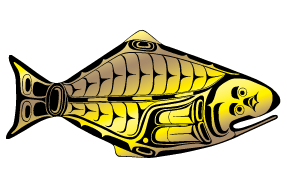Since its inception, the International Pacific Halibut Commission (IPHC) has collected Pacific halibut otoliths (ear bones) for use in age determination. Ages (along with other accompanying biological data) are used for estimating fish growth and mortality rates as well as population structure. The IPHC Secretariat currently processes and reads between 25,000 to 30,000 otoliths each year, and those ages are used in the annual stock assessment.
Ageing methodology
Otoliths were determined to be the preferred structure for ageing Pacific halibut very early in the history of the IPHC. Annual rings are deposited on the otoliths that can then be counted using a microscope to determine the age. The IPHC’s aging methodology has evolved over time, with the more accurate break-and-bake cross section technique replacing surface reading of whole otoliths.
Otolith information
The distances between sequential annual growth zones (increments) on otoliths can be measured and used to provide information on otolith growth rates within and between individuals, and in some species, have been used to infer somatic growth rates. Otoliths can also provide additional information besides age and growth rate estimates. Trace elements in otoliths can be used to identify a fish to a particular geographical origin. Stable isotopes in otoliths can be used to reconstruct a fish’s temperature or diet history. Otolith size can be used to estimate fish size, and otolith shape is used to classify fish to different stocks in some species. The IPHC has conducted several studies using otoliths for information other than age. These include using otolith length and weight to estimate Pacific halibut weight, investigating sex-related differences in otolith shape, and elemental analysis.

